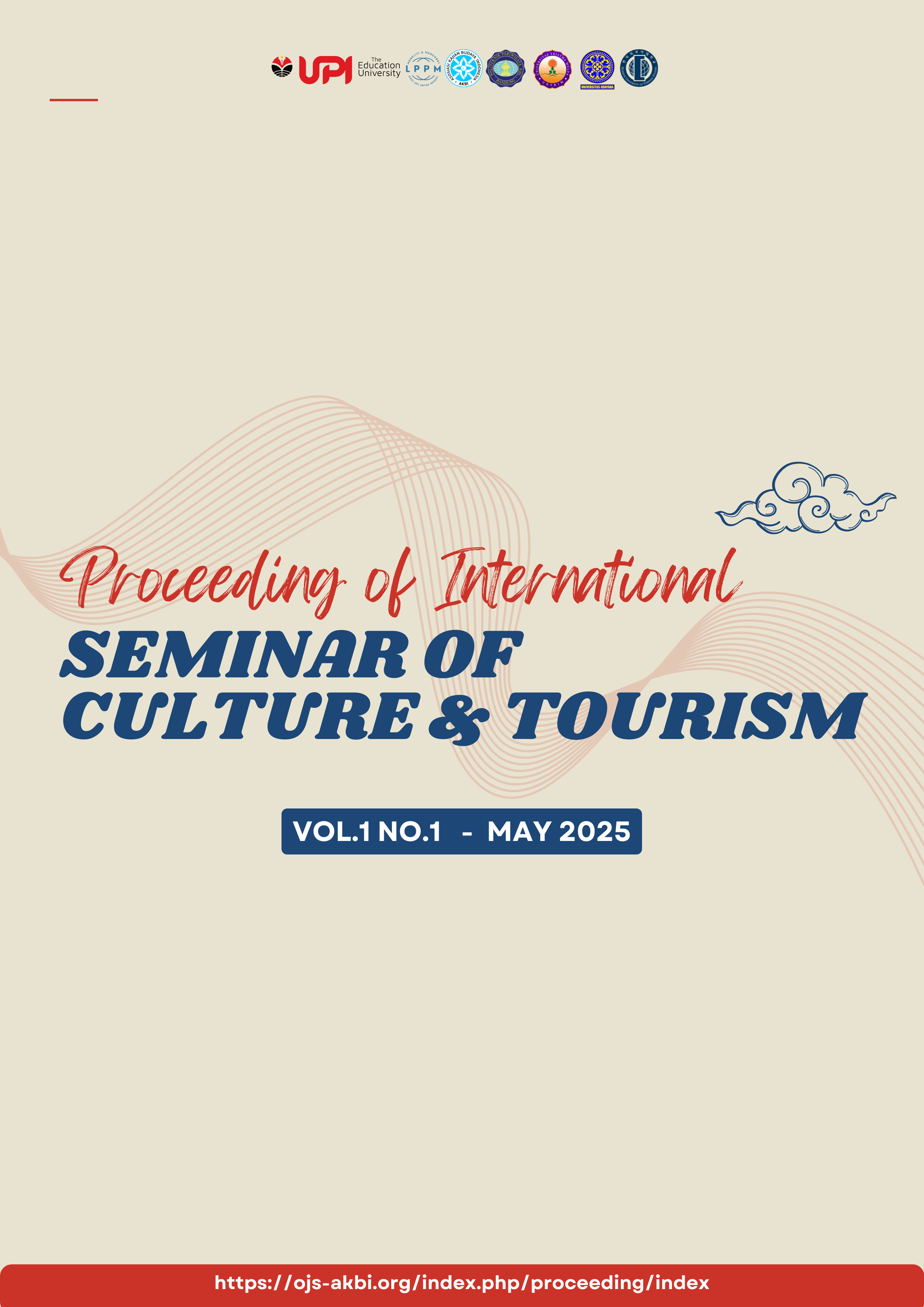ANALISIS POTENSI TAMAN NASIONAL GUNUNG MERBABU SEBAGAI PENGEMBANGAN KAWASAN EKOWISATA
Kata Kunci:
ecotourism, nature tourism, conservation, national parkAbstrak
Ecologically, ecotourism activities have special characteristics that focus on the environment and can benefit the surrounding community. Additionally, these activities must involve and empower the community in every aspect. This study aims to examine the application of ecotourism principles and analyze the potential for ecotourism area development in Mount Merbabu National Park, specifically in the utilization zone in Magelang Regency, which has not been fully implemented. The method used is a mixed-method, combining quantitative and qualitative descriptive methods with data collection through surveys. The research results show that 37% of the ecotourism sites are highly optimal and have already implemented ecotourism principles. Secondly, 13% are considered fairly optimal ecotourism locations, while the remaining 50% are considered ecotourism properties that have not yet reached their full potential. Several factors influence this, including the local government and community involvement. Therefore, an analysis of the potential for ecotourism development must be conducted to address these issues.
Unduhan
Referensi
Arida, I. N. S. (2017). Ekowisata : Pengembangan, Partisipasi lokal, dan Tantangan Ekowisata. Cakra Press.
Aziz, A. (2008). Peran Serta Masyarakat dalam Upaya Pengembangan Ekowisata di Kabupaten Pekalongan. Universitas Sebelas Maret.
Dewi, M. H. U., Fandeli, C., & Baiquni, M. (2013). Pengembangan Desa Wisata Berbasis Partisipasi Masyarakat Lokal di Desa Wisata Jatiluwih Tabanan, Bali. KAWISTARA, 3(2), 117–226.
Gunawan, I. (2014). Metode Penelitian Kualitatif, Teori dan Praktik. Bumi Aksara.
Kasmahidayat, Y. (2023). Bentuk Kolaborasi Serta Pengembangan Ekonomi Kreatif, Kewirausahaan, dan Industri Pariwisata. Pustaka Larasan.
Kasmahidayat, Y., & Herliawan, R. J. (2023). Pengembangan seni tradisi sebagai penguatan wisata budaya kawasan ekonomi khusus Tanjung Lesung. Jurnal Abmas, 23(1), 9–16. https://doi.org/10.17509/abmas.v23i1.57292
Maryani, E. (1991). Pengantar Geografi Pariwisata. Jurusan Pendidikan Geografi FPIPS IKIP.
Maryani, E. (2019). Geografi Pariwisata (1st ed.). Penerbit Ombak.
Matysek, K. A., & Kriwoken, L. K. (2003). The Natural State: Nature-Based Tourism and Ecotourisrn Accreditation in Tasmania, Australia. Journal of Quality Assurance in Hospitality & Tourism, 4(1). http://www.haworthpress.com/store/producLasp?sku=J162
Menteri Pariwisata dan Ekonomi Kreatif. (2020). Outlook Pariwisata dan Ekonomi Kreatif Indonesia 2020/2021.
Nuryanti, W. (1996). Heritage and Postmodern Tourism. Annals of Tourirm Research, 23(2), 249–260.
Peraturan Menteri Dalam Negeri Nomor 33 Tahun 2009 Tentang Pedoman Pengembangan Ekowisata Di Daerah (2009).
Peraturan Menteri Kehutanan Nomor 56 Tahun 2006 Tentang Pedoman Zonasi Taman Nasional (2006).
Primajaya, H. (2021). Pengembangan Ekowisata Berbasis Kearifan Lokal (Studi di Desa Adat Sendi Kabupaten Mojokerto). Universitas Brawijaya.
Rangkuti, F. (2008). Analisis SWOT Teknik Membedah Kasus Bisnis. Gramedia Pustaka Utama.
Rhama, B. (2019). Peluang Ekowisata dalam Industri 4.0 di Indonesia. JISPAR: Jurnal Ilmu Sosial, Politik Dan Pemerintahan, 2.
Sugiyono. (2013). Educational research methods approach quantitative, qualitative and R&D. Alfabeta.
Susilawati, S. (2016). Pengembangan Ekowisata sebagai Salah Satu Upaya Pemberdayaan Sosial, Budaya, dan Ekonomi di Masyarakat. Jurnal Geografi GEA, 16(2).
Undang-Undang Republik Indonesia Nomor 5 Tahun 1990 Tentang Konservasi Sumber Daya Alam Hayati Dan Ekosistemnya (1990). www.djpp.depkumham.go.id
Unduhan
Diterbitkan
Cara Mengutip
Terbitan
Bagian
Lisensi
Hak Cipta (c) 2025 Proceeding of International Seminar of Culture and Tourism AKBI

Artikel ini berlisensiCreative Commons Attribution-ShareAlike 4.0 International License.




